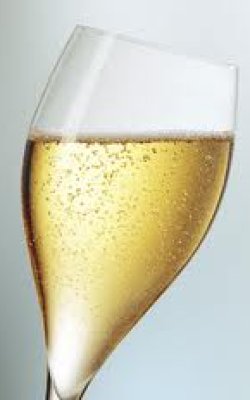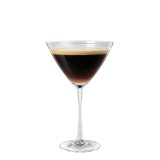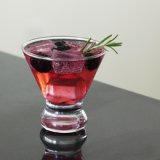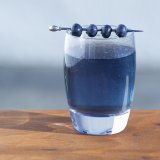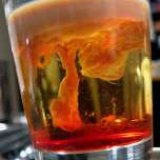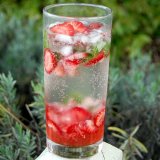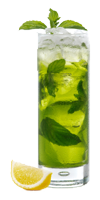For certain events and holidays, like Valentine’s Day and New Year’s Eve, the issue of sparkling wine takes a precedence in your daily life that it doesn’t take on other days. You may become consumed with what type of sparkling wine to purchase and serve to your loved ones. I am sure that for many of you, the first thing that comes to mind is Champagne. I certainly understand why. It’s the granddaddy of them all and thanks to the strict regulations in Champagne, usually a consistent and delicious choice. But, if you are limiting yourself to Champagne, you are doing yourself a disservice. The world of sparkling wine is vast with almost unlimited options. We know that it is those options that also scare people into sticking with what they know. We thought that this guide to sparkling wine might help you break out of your rut and offer some assistance in picking your next sparkler.
Traditional Method
Champagne is made in a method called the Method Champenoise in Champagne and the Method Traditionale in the rest of the world. In fancy international trade treaties, it has been agreed that the only area in the world that is allowed to use Method Champenoise is in Champagne France. In other areas of France, the process they use must be called Method Traditionale. The Traditional Method requires a two-set process. First, grapes are picked and made into a still wine and bottled. Yeast and sugar are then injected into each bottle where they stay from a period of months to years, depending on the style of sparkling wine produced. It is the yeast and sugar that create the bubbles.
Champagne is extremely popular and its style has been copied around the world through the use of the Traditional Method. While winemakers may use the same technique as was originally used in Champagne, very different wines result. Because grapes are a living thing, they are affected by their environment, or what people in the wine industry like to call terroir. Grapes are affected by the soil in which they grow and the environment that surrounds them. These differences are carried into the wine. But, what all of these wines have in common are characteristics brought to the wine by the yeast. It is the yeast that gives sparkling wine made in the Traditional Method, the characteristics of bread, cookies, toast, diary, mushroom and yeast, itself.
If you like Champagne, you should explore other wines made in the same method to see what you like. Some of the wines might even fool you into thinking they are Champagne and you might like their prices a little bit better. Here are wines and places that make wines in the Traditional Method:
Champagne – this is the original. See our Every Day Primer on Champagne.
New Zealand – a relatively new entrant into the sparkling wine business but some of the wines closely mask Champagne. Of all the sparkling wines in the world, the ones from New Zealand are most often confused for Champagne. In New Zealand, they use the same grapes and method to make the wine and have similar growing conditions and soil to Champagne.
France – many regions outside of Champagne also make sparkling wine. Many of these wines are classified as Cremants, which are grown in cool growing regions either from latitude or altitude. Some of the regions in France that produce Cremants use the some of the same grapes, while other regions use grapes that have been historically grown in those regions, such as Chenin Blanc, Pinot Gris, Clairette or Mauzac. To be called a Cremant, the grapes must be hand picked and the secondary fermentation must take a minimum of 9 months. The major Cremants in France are Cremant de Alsace, Cremant de Loire, Cremant de Burgundy (this is most like Champagne) and Cremant de Limoux.
United States – very good sparkling wines are made in California, Oregon and Washington. Again, the same grapes and methods as Champagne are used with Washington also make sparkling wine from Riesling. However, the growing conditions are vastly different, particularly in California and Washington, and the wines have much riper fruit qualities, like strawberry, raspberry and gala apples. Oregon more closely mimics Champagne then California or Washington, but there is still something quite different about the wine. In California, try sparkling wines from top Champagne producers, like Domaine Carneros, Roederer or Domaine Chandon, or home-grown producers, liked Scharfenberger or Schamsburg. In Oregon, give Argyle a try.
Spain – the sparkling wines in Spain are called Cava. Spain’s sparkling wine industry got its start when winemakers from France fled France after their crops were wiped out in the 1800’s by phyloxera, a louse that eats the roots of grapevines and kills them. In Spain, Cava is made mainly in Catalyuna but also Rioja and Valencia. While traditional method is used, local grapes from Spain are also used, providing a very different flavor profile to Cava.
Italy – in Italy, the main sparkling wine made in the Traditional Method is Franciacorta (there are many other sparkling wines but they aren’t made using the Traditional Method). Franciacorta comes from a very cool growing region in Lombardy in northern Italy and uses many of the same grapes. The wines can be similar to Champagne but with an Italian twist.
Australia – well made sparkling wines are coming from Australia’s cooler regions, like Tasmania and the Yarra Valley. Again these wines use the same grapes and methods as Champagne but are very different. The sparkling wines from Australia remind me more of the ones from the United States than Champagne.
You also have traditional method sparkling wines being made in South Africa, Argentina, Brazil and the United Kingdom, which are supposed to be very good. However, given the limited production and internal consumption, it is difficult to find those wines outside their home countries.
Fruit Forward Sparklers
These sparkling wines that are made to preserve their fruit flavors and are made using the tank method to show limited to no “yeasty” characteristics. The main styles of these wines are made in Italy, Germany and Austria where fruity white wines are used as the base wine. The bubbles in these wines are added using the tank method where the wines go through secondary fermentation in a large tank in order to retain the fruit characteristics of the underlying wine. The most popular of the tank method style of wine are Prosecco, Asti and Sekt.
Prosecco – this sparkling wine comes from north-eastern Italy in the Veneto. There is a large area where the grapes are grown and the wine produced, which has historically been called Prosecco. In order to protect Prosecco’s heritage, the grapes are now being called by their original name Glera and only the original growing zone for Prosecco can be called Prosecco. The rest of the wine in the outlying areas will now be called Glera. While a limited amount of other grapes can be used in Prosecco, most are made from 100% Glera grapes. The sparkling wine produced ranges from dry to medium sweet and has a flavor profile that highlights gala apples, white flowers, a chalky minerality and a slight yeastiness, which reminds me of a light beer.
Asti – this sparkling wine comes from north-western Italy in Piedmont. Mass quantities of poor quality “Asti Spumante” was produced in the 1970’s and 1980’s so the wine has dropped “Spumante”. Asti is made from Muscato Bianco, which is the highest quality Muscat grape and the wine has a sweet perfume of grapes, apricots, peaches and honeysuckle. Most Asti is off-dry to medium sweet and makes an excellent appertif or accompaniment to cake and other sweets. This wine is on its way to once again becoming tremendously popular and sales increased by over 70% in 2011. Try the Martini & Rossi or some of the smaller producers.
Moscato d’Asti – this sparkling wine is also from north-western Italy in Piedmont and is produced from the Moscato Bianco grape. However, the style of the wine is different. The wine has less bubbles and is sweet, ranging from medium sweet to luscious. The best Moscato Bianco grapes are used in Moscato d’Asti, which results in a honeyed quality with notes of fresh and dried peaches and apricots, white flowers and honey. This wine is goes well with puddings and other sweet things or can be drunk on its own for dessert. One of my favorite’s is the GD Varja Moscato d’Asti.
Brachetto d’Acqui – this sparkling wine is also from north-western Italy in Piedmont and is made from Brachetto d’Acqui, a red grape that is a close cousin to Moscato Bianco. In this wine, not only do you get the beautiful Moscato notes, along with a little raspberry and strawberry, you also get a wine with a pretty pink to light red color. It certainly fools people. This wine isn’t that easy to find but Banfi has launched national distribution of its Rosa Regale wine made from this grape. The next time you go to your favorite wine shop, ask for a Brachetto d’Acqui – you wouldn’t be disappointed. The folks at Stella Rosa, also made from Brachetto, told us that they can’t keep it in the stores.
Sekt – these sparkling wines are from Germany and Austria. In Germany, most sekts are low quality wines that are produced from grapes that are purchased from elsewhere in Europe. But, Deutscher Sekts are among the finest expressions of tank method wines. The wines are made from Riesling, Chardonnay, Pinot Noir, Pinot Gris or Pinot Blanc and are sourced from the finest vineyards in Germany. The wines generally bear vintages, as well as the name of the vineyards where the grapes were sourced. Sekts are also made in Austria from local grapes, including Gruner Veltliner and are good quality. I have fallen in love with the sparkling Gruners, which combines the zippy green notes of the Gruner with bubbles.
Sparkling Red Wines
Two countries corner the market on sparkling red wines – Italy and Australia. And, no, not all the wines are sweet. In fact, most of them are dry, although you can find a number of sweet ones as well. In Italy, they make all kinds of sparkling red wines but the most famous is Lambrusco. You will also find Brachetto d’Acqui, which is becoming increasingly popular, Bonarda and a number of other local varietals. The Italians aren’t afraid to add a little sparkle to their wine. The other famous sparkling red wine is the sparkling Shiraz that comes from Australia. Shiraz is also known by it’s French name of Syrah.
Here are the most famous of the sparkling reds. I would highly recommend giving them a try.
Lambrusco – this sparkling wine hails from the Emilie-Romagna region of Italy hailed for its culinary prowess. How could it not be, it’s the home of Parmesan cheese, Bolgenese sauce and Basalmic Vinegar, just to name a few of its culinary superstars. Lambursco was a wine designed to pair with this rich and acidic food – the bubbles, acid and flavors cutting right through it. Lambrusco is also the only wine made in Europe where the grapevines are local and not of the famed Vitus Vinifera, which is the species of grapevines that most of the wine we drink comes from. Lambrusco is a diverse wine. There are a number of clones of Lambrusco and it grows in a fairly wide area. It comes in styles that range from dry to sweet but it always has an earthy and fruity quality. It makes an excellent accompaniment to meat based pasta sauces or lasagna.
Shiraz – this sparkler was invented down under by the Aussies. They took a grape that most people wouldn’t have expected to make a good sparkling wine because of its tannins and turned it into a great sparkling wine. Sparkling Shiraz is vinified to focus on the fruit character of Shiraz – those blackberry and currant notes- along with some greenness and a little bit of the gamey, leather qualities for which Shiraz is known. These wines range from dry to sweet and can knock your socks off. For a lighter alternative, serve Sparkling Shiraz with your next steak, lamb or heavy meat based dishes.
Photo courtesy of SMCCD

